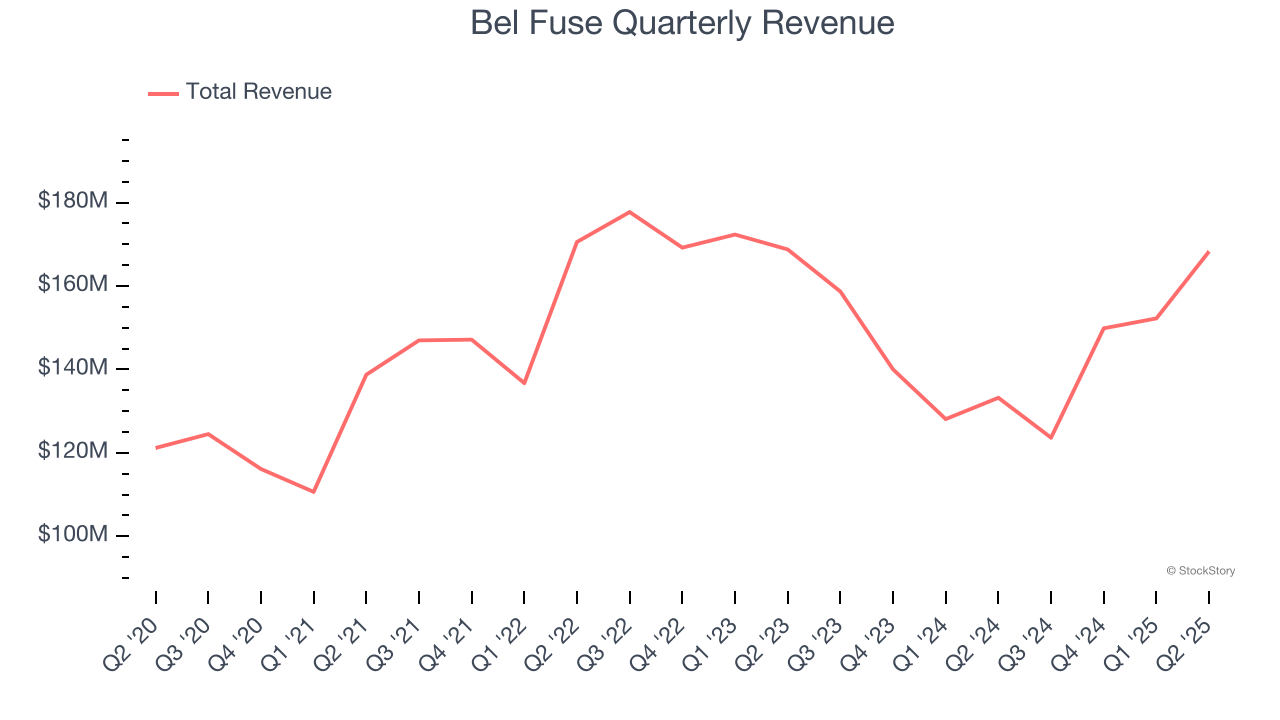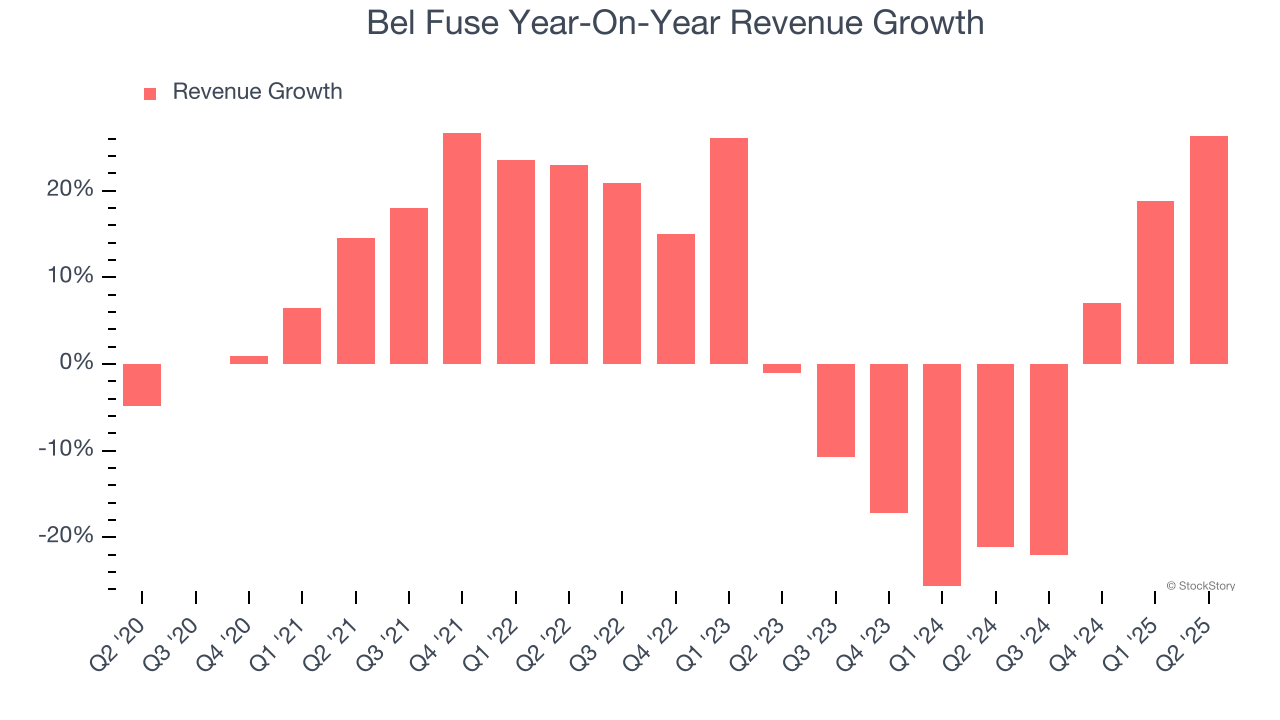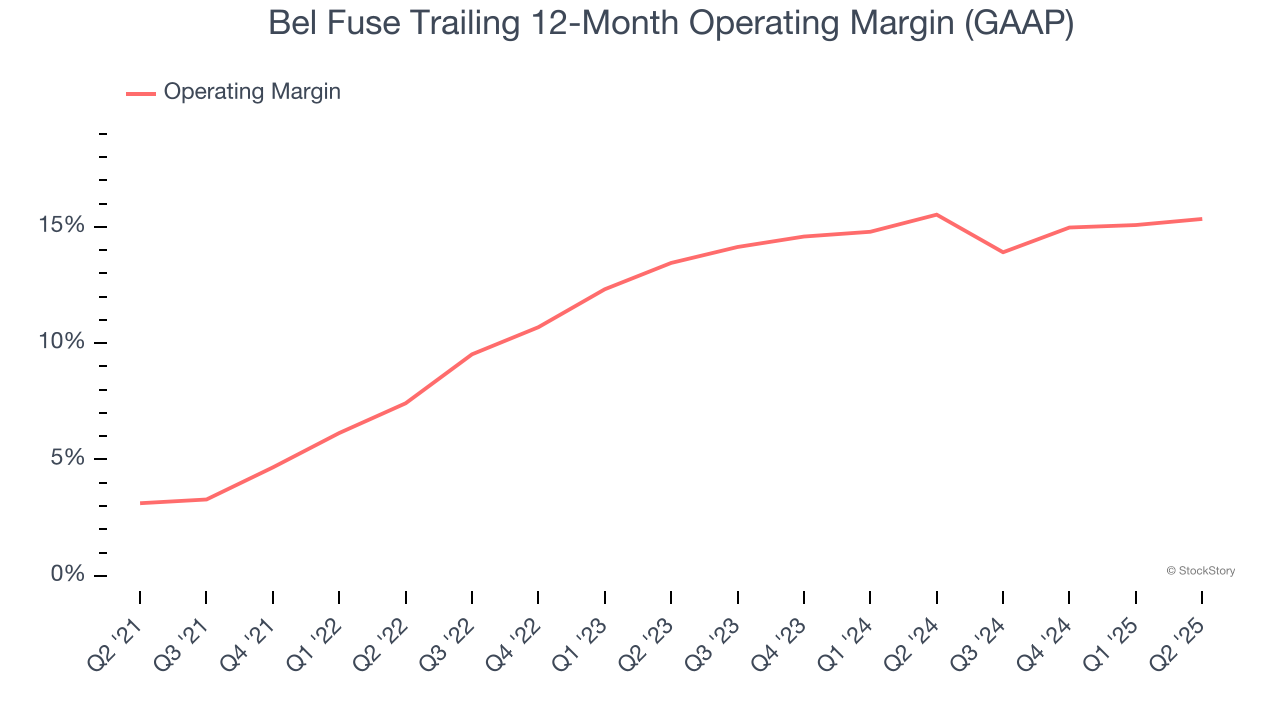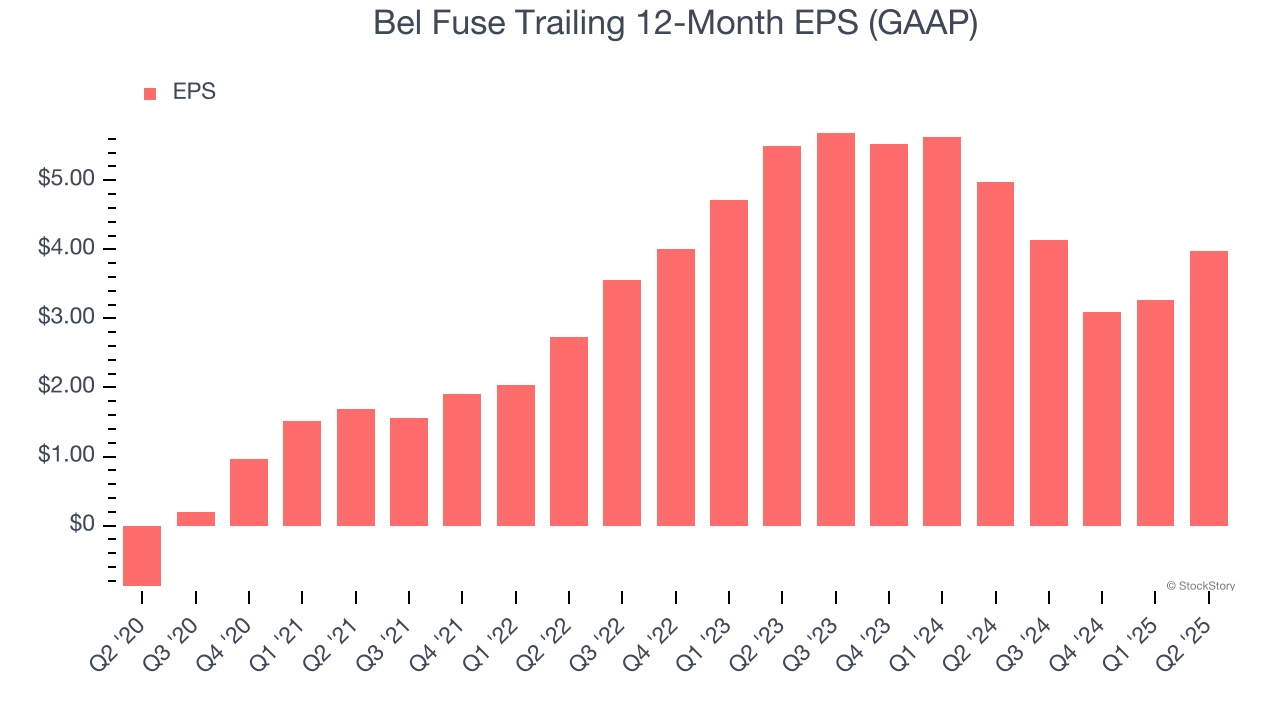
Electronic system and device provider Bel Fuse (NASDAQ:BELFA) reported Q2 CY2025 results exceeding the market’s revenue expectations, with sales up 26.3% year on year to $168.3 million. Its GAAP profit of $2.14 per share was significantly above analysts’ consensus estimates.
Is now the time to buy Bel Fuse? Find out by accessing our full research report, it’s free.
Bel Fuse (BELFA) Q2 CY2025 Highlights:
- Revenue: $168.3 million vs analyst estimates of $152.9 million (26.3% year-on-year growth, 10.1% beat)
- EPS (GAAP): $2.14 vs analyst estimates of $1.01 (significant beat)
- Adjusted EBITDA: $35.19 million vs analyst estimates of $28.9 million (20.9% margin, 21.7% beat)
- Operating Margin: 17.7%, in line with the same quarter last year
- Free Cash Flow Margin: 10%, down from 23.2% in the same quarter last year
- Market Capitalization: $1.33 billion
Company Overview
Founded by 26-year-old Elliot Bernstein during the electronics boom after WW2, Bel Fuse (NASDAQ:BELF.A) provides electronic systems and devices to the telecommunications, networking, transportation, and industrial sectors.
Revenue Growth
A company’s long-term sales performance is one signal of its overall quality. Any business can have short-term success, but a top-tier one grows for years. Over the last five years, Bel Fuse grew its sales at a tepid 5% compounded annual growth rate. This was below our standard for the industrials sector and is a rough starting point for our analysis.

We at StockStory place the most emphasis on long-term growth, but within industrials, a half-decade historical view may miss cycles, industry trends, or a company capitalizing on catalysts such as a new contract win or a successful product line. Bel Fuse’s performance shows it grew in the past but relinquished its gains over the last two years, as its revenue fell by 7.1% annually. Bel Fuse isn’t alone in its struggles as the Electronic Components industry experienced a cyclical downturn, with many similar businesses observing lower sales at this time. 
This quarter, Bel Fuse reported robust year-on-year revenue growth of 26.3%, and its $168.3 million of revenue topped Wall Street estimates by 10.1%.
Looking ahead, sell-side analysts expect revenue to grow 9.6% over the next 12 months, an improvement versus the last two years. This projection is noteworthy and indicates its newer products and services will spur better top-line performance.
Here at StockStory, we certainly understand the potential of thematic investing. Diverse winners from Microsoft (MSFT) to Alphabet (GOOG), Coca-Cola (KO) to Monster Beverage (MNST) could all have been identified as promising growth stories with a megatrend driving the growth. So, in that spirit, we’ve identified a relatively under-the-radar profitable growth stock benefiting from the rise of AI, available to you FREE via this link.
Operating Margin
Operating margin is an important measure of profitability as it shows the portion of revenue left after accounting for all core expenses – everything from the cost of goods sold to advertising and wages. It’s also useful for comparing profitability across companies with different levels of debt and tax rates because it excludes interest and taxes.
Bel Fuse has managed its cost base well over the last five years. It demonstrated solid profitability for an industrials business, producing an average operating margin of 11.3%.
Looking at the trend in its profitability, Bel Fuse’s operating margin rose by 12.2 percentage points over the last five years, as its sales growth gave it operating leverage.

This quarter, Bel Fuse generated an operating margin profit margin of 17.7%, in line with the same quarter last year. This indicates the company’s cost structure has recently been stable.
Earnings Per Share
Revenue trends explain a company’s historical growth, but the long-term change in earnings per share (EPS) points to the profitability of that growth – for example, a company could inflate its sales through excessive spending on advertising and promotions.
Bel Fuse’s full-year EPS flipped from negative to positive over the last five years. This is encouraging and shows it’s at a critical moment in its life.

Like with revenue, we analyze EPS over a shorter period to see if we are missing a change in the business.
Sadly for Bel Fuse, its EPS declined by more than its revenue over the last two years, dropping 15%. This tells us the company struggled to adjust to shrinking demand.
In Q2, Bel Fuse reported EPS at $2.14, up from $1.43 in the same quarter last year. This print easily cleared analysts’ estimates, and shareholders should be content with the results. We also like to analyze expected EPS growth based on Wall Street analysts’ consensus projections, but there is insufficient data.
Key Takeaways from Bel Fuse’s Q2 Results
We were impressed by how significantly Bel Fuse blew past analysts’ EPS expectations this quarter. We were also excited its EBITDA outperformed Wall Street’s estimates by a wide margin. Zooming out, we think this quarter featured some important positives. The stock traded up 7.1% to $99.04 immediately after reporting.
Sure, Bel Fuse had a solid quarter, but if we look at the bigger picture, is this stock a buy? If you’re making that decision, you should consider the bigger picture of valuation, business qualities, as well as the latest earnings. We cover that in our actionable full research report which you can read here, it’s free.
